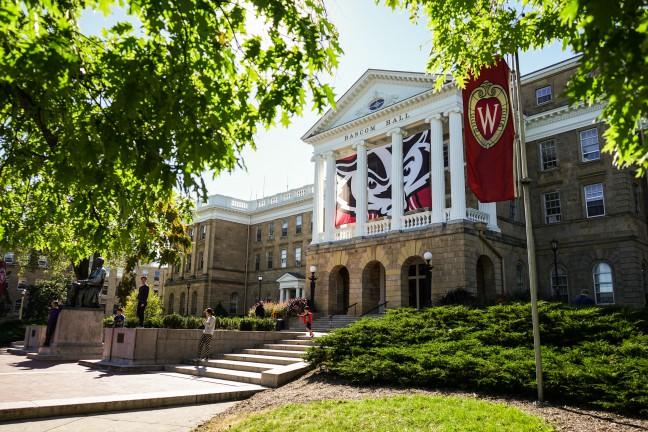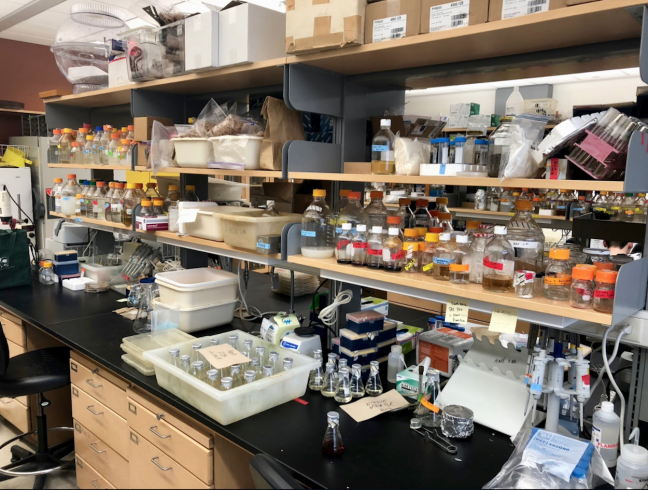University of Wisconsin’s experiment “Polar Radiant Energy in the Far Infrared Experiment” was one of the two experiments NASA chose from a pool of 14 proposals to aid them in measuring the Arctic’s radiant energy and how this energy is affecting the Arctic warming.
To measure the Arctic’s radiant energy, PREFIRE will use miniaturized thermal spectrometers about the size of a penny, that will be placed on two CubeSat satellites — miniaturized satellites used for space research, said Tristan L’Ecuyer, UW professor of atmospheric and oceanic sciences and principal investigator for the PREFIRE science mission.
The two CubeSat satellites will then orbit around the Earth’s poles to measure the emission of far-infrared rays from space. They will then transmit the data to Svalbard, Norway where it will be sent to UW, L’Ecuyer said. Observing this data will allow scientists to access and determine how changes in thermal infrared rays in the Arctic affect the Earth.
L’Ecuyer stressed the importance of PREFIRE because of how difficult it is to regularly collect data in the Arctic year-round.
“The problem is that there’s ice, it’s cold and you can’t sail [in the Arctic] year-round, so it’s really hard to go make measurements,” L’Ecuyer said. “We want to map out the thermal energy and measure it all across the Arctic and there’s no way of doing that from the ground or aircraft. But with the satellites, they will continuously revolve around the earth for a whole year, mapping out what the thermal energy looks like across the Arctic.”
NASA astronaut draws on outer space experiences to inform approach to real world
L’Ecuyer said the thermal energy being recorded is significant to look at because the Earth emits energy to counteract the sun’s emitted solar energy. The Arctic takes the excess energy the sun emits and radiates it back into space to help regulate the Earth’s overall temperature.
In the Arctic, that energy comes in the form of infrared rays, L’Ecuyer said. The Arctic is extremely effective in reflecting the sun’s solar energy because of its extensive white cover of snow and ice.
The initial warming that leads to even more warming is known as a positive feedback loop, said Steve Vavrus, an expert on climate change/arctic climate and senior scientist at Nelson Center for Climatic Research.
“As these surfaces turn into darker ocean water and bare land when the climate warms, the Arctic will absorb more solar energy and therefore warm up even more,” Vavrus said.
Vavrus and L’Ecuyer both stressed the Arctic’s importance. L’Ecuyer said the Arctic is one of the most important regions on earth because of its abundance of ice. But this ice is melting, resulting in the Arctic being the most drastically changing place on earth.
UW professor to lead NASA team researching pollution emissions
The Arctic and Antarctic serve as Earth’s thermal bookends, Vavrus said. Since it is a “bookend” and acts like the Earth’s thermostat, the Arctic melting causes problem with the Earth’s climate. Both L’Ecuyer and Vavrus stated there will be a point in this century when the Arctic will be no longer be the year-round cold tundra people are used to.
Vavrus further explained the Arctic will no longer have sea ice, which is ice formed on the ocean, present year-round. The sea ice will become seasonal and only occur in colder months and generally would not be present during much of the summer.
L’Ecuyer said the Arctic melting would result in a global rise in sea level. This is currently occurring because Greenland’s ice sheet is melting. The global rise in sea levels would cause major catastrophes because the rise could permanently submerge many places because of their geography, L’Ecuyer said.
L’Ecuyer said the Arctic is an interesting place right now because it is getting so much attention. One interesting aspect is that if the Arctic does become ice-free at some point, it could become a place goods could be shipped through or another place where oil could be drilled from.
L’Ecuyer also said all branches of the U.S. Military are viewing the warming of the Arctic as an issue for national security.
“Basically, it opens up a northern border above the U.S. that would make it possible to sail around the Arctic,” L’Ecuyer said.
L’Ecuyer believes there’s more to PREFIRE than just completing its research because of the Arctic’s importance in the Earth overall.
UW will be leading all the data analysis for PREFIRE. This will provide graduate students a chance to work on this project as their graduate school capstone requirement.
PREFIRE currently is in its planning stages and most likely will be launched in 2021.





















